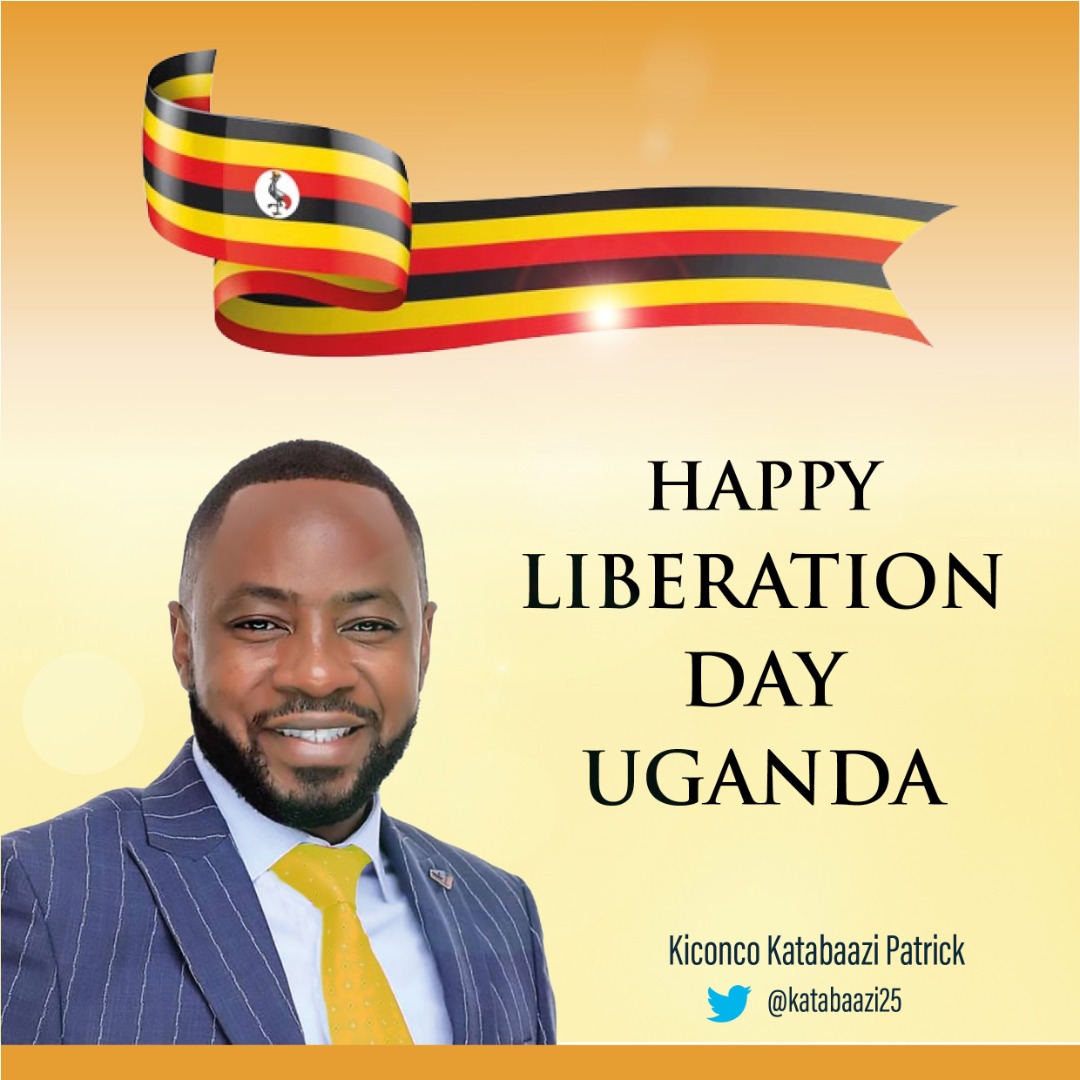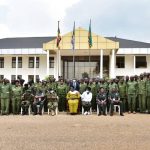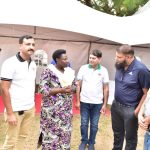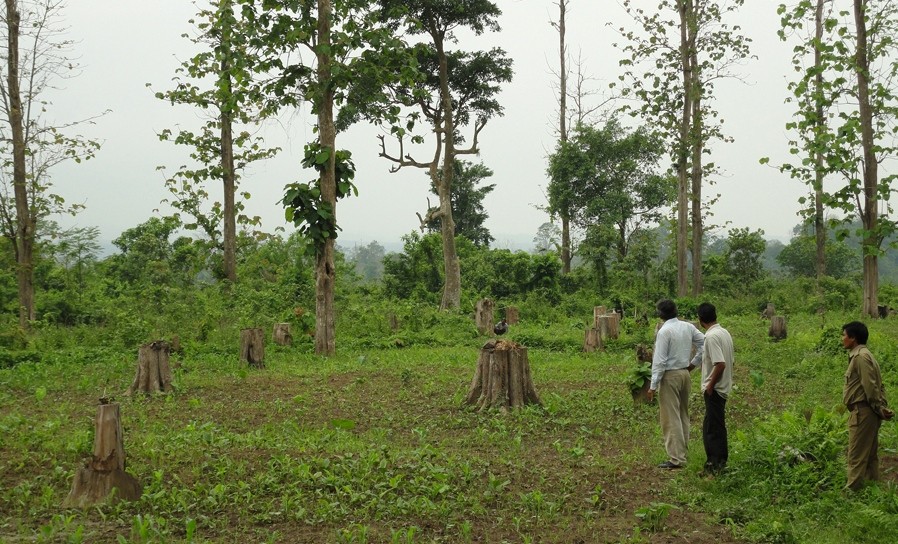38 years ago, as a young boy in preschool residing at Kikungiri staff quarters on the hill (now mainly used by Kabale University but previously housed Ndorwa County headquarters, Ndorwa Prison, Kabale Administration police barracks, and staff houses), I came face to face with NRA guerrillas who had overrun Kabale Town and moved up to secure government installations on the hill to take effective control.
For many days prior, all of us in the neighborhood had to be inside the house by sunset. The situation was tense, and due to uncertainty, most of our neighbors had opted to go to the countryside, while others stayed put. I was too young to decipher what was going on, but I recall soldiers, mainly kadogos, riding on open jeeps, making rounds on Kikungiri Hill, shooting in the air, causing people to run to their houses and others to scramble for safety.
The government of General Tito Lutwa had fallen, and guerrillas of General Museveni had captured power. My mother, who had been transferred from Rwamucucu to Kyanamira and then to Kabale District Administration headquarters, became anxious due to the tense situation and decided to relocate us three hundred meters away to her elder sister’s house (Costance Behemwire (RIP)), whose husband (Eldard Behemwire) was the Assistant District Treasurer at the time.
I could eavesdrop on the conversations of old members of the house, including my older cousins. There was talk of various uncles who had escaped from our grandfather’s home in Nyakagyeme, Rukungiri, to join the guerrilla war. Did they survive? Where did they go?
Hardly a month into the situation of uncertainty, our house was surrounded by tens of soldiers, mainly Kadogos. We were petrified to the core. They wanted to see Uncle and Aunt. As the two went to open the door, I, together with my cousins, followed.
When the door opened, a medium-sized dark man in full military uniform disembarked from the jeep surrounded by mean-looking men with rifles slung on their shoulders. My Aunt Constance raised her voice, “Ogu kani Jack bantumwe.” Right there was Major Jack David Mishambi, who had left home to join the struggle and had been posted to Kabale as the District Administrator to have NRA take effective control of the southwest block (Major Jack Mishambi rose through the ranks and died at the rank of Lt. Col in 2004.)
My Aunt subjected Uncle Jack to unending questions, some with answers and others met with a somber mood. The talk was around NRA combatants that either survived or died in the struggle. It was the first time to hear of Benon, a cousin to our mother, who we later came to know as Lt. Col Benon Tumukunde. Jack also gave a report about Henry, how he had survived the war but with his leg badly damaged. We learned that this, then Major Henry Tumukunde, a brother to the wife of Uncle Sezi, the eldest son of my grandfather Canon Moses Kasasa.
Seeing Uncle Jack, as we fondly called him, became a routine at the house. We, the youngest children in the house, would sing songs for him every time he came to visit. He had admirable children – Kadogos that he would come along with, and the most loved among these was Kadogo Simon. To the best of my recollection, Simon could have been about 15 years old, as he could easily relate to my older cousins who were in their early and late teens.
Uncle Jack’s coming to the house brought relief, and soon after our parents returned to work, and the situation normalized. A year later, our father James Katabazi, who had left service as Saaza Chief/County Chief of Rubanda, had retired in Rwamucucu, and we were to join him.
We arrived in Rwamucucu at the birth of the Resistance Council system. My father, a renowned UPC supporter, enthusiastically joined the RCs system from RC1 at the Village to RC4 at the County level, where he was a member of the County RC4 executive that went on to Elect Mr. Kakuramasi as the first RC5 Chairman of Kabale District.
I was already in primary school when the RC and later LC system evolved. Because my mother was working at the subcounty and my father being part and parcel of the elective system for some time, I was able to see firsthand these processes and to learn more about the NRA, NRM, and NRC evolution.
Through interactions with my father, I had learned that he had participated covertly in FRONASA activities soon after the fall of Amin, which caused him trouble at some point. While in Rubanda, he created a passage for the team led by Amama Mbabazi at the time, and whenever he recounted events of the times, I could sense his disdain for wars that destabilized the country shortly after independence.
The tales of Bush struggle and military gymnastics were very captivating and crowded in mysteries. At some point, we were told how Museveni would transform into a cat whenever he would be cornered. These tales preoccupied our talks in my childhood. The RC system was instrumental in creating and sustaining security at the local level and ultimately stabilized society.
Roadblocks that had been staged along major roads were later removed, and life went to normal. In 1994, I came face to face with real politics but not as either a candidate or voter but as a curious spectator. Yes, I was in Senior one, and Constituent Assembly General elections were upon us.
In Rukiga, it was a two-horse race between Jack Sabiti and Manzi Tumubwine. Jack Sabiti was the darling of young people and ultimately carried the day. Hon Manzi, who was NRC member for Rukiga, bounced back and became the first directly elected MP for Rukiga, heralding the Manzi-Sabiiti divide that has dominated electoral processes to date.
The most eye-catching race was in Kabale municipality in which Dr. Ruhakana Ruganda was competing against Bob Kitariko, Turya-Kazunguza, and Kahindi. We were allowed at school to attend rallies that happened during weekends.
At Kigezi High School, I was privileged to have been in numerous audiences addressed by Dr. Ruhakana Rugunda, whose eloquent and sophisticated speeches made a profound effect on many of us. One evening, word swept through that Ndugu, as he is fondly called, was coming from Rwere. We all ran to meet him, and indeed we stopped him just below the cathedral. What we wanted was simple: to address us, and he didn’t disappoint.
NRM through the RC system and now CA had created electoral democracy that ensured active participation of adult Ugandans based on merit and devoid of sectarian tendencies of religion and tribe that dominated our turbulent past. From insecurity to security and now to non-confrontational and nonsectarian centered elections, a new sense of patriotism and belonging emerged. Electoral democracy has stood the test of time.
There is relative security and peace in all parts of the country, save for a few isolated incidents that have surfaced but managed case by case. The pacification of Northern Uganda, stabilization of Eastern Uganda, and supporting economic activities in the Karamoja region have been key in ensuring national cohesion. The journey for economic transformation, starting with economic empowerment, etandikwa schemes, Poverty Alleviation Program, Poverty Action Plan, and many other programs such as youth livelihood programs, Parish Development model, Women Entrepreneurship program, Growth of Savings and Credit cooperatives have been critical in the quest for transforming our society from peasantry to market economy.
While there is still a long way to go, it is clear that our people now understand that the future rests on production that guarantees what to eat today and what to save. The recent drive for market-linked production and value addition with export promotion strategies are important in driving the social-economic transformation agenda. In 38 years under the NRM ideology, we have witnessed a stable inflation rate, stable exchange rate, steady growth in GDP, and a growing revenue base.
NRM has ensured strong economic fundamentals and set a firm foundation for industrialization, the transformation of the informal sector, private sector growth, and market-led agricultural production. All these, supported by a strong legal and policy environment, security, and improving physical infrastructure, will catapult the country into an upper-middle-income country if these efforts are sustained.
Investments in health, education reform, skilling, and strategic investment in human capital will need a lot of support to fasten our development agenda. Addressing production and productivity constraints, access to markets both local and international, access to capital, and improving and sustaining human capital fundamentals of health, education, and social protection will ensure that the next generation will witness accelerated growth.
As we celebrate 38 years of NRM, let us reflect on the journey so far, celebrate milestones, and ponder on the tasks ahead of us. I know that most of the key participants of the NRA/NRM struggle are long gone, but there are many children of the revolution and grandchildren who are ready to take the ideas of the struggle forward.
From tales, personal experience, and the contribution of my relatives in the revolution, I feel sufficiently inspired to provide leadership and support in sustaining the revolution and its noble agenda of social-economic transformation, beginning with a conversation that I am currently having with the people of Rukiga. I am preparing myself and organizing our people for the 2026 general elections in that regard.
For those living and resting that took the initiative to liberate the country, I thank you. It was worth it. I congratulate President Yoweri Museveni, historical and all Ugandans on this day. Happy Liberation day.
Kiconco Katabaazi Patrick, Esq. Advocate.




















